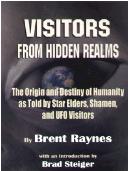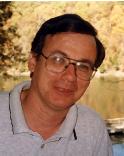| ||
 | ||||
 | ||||
| Visitors from Hidden Realms: The Origin and Destiny of Humanity As Told by Star Elders, Shamen, and UFO Visitors | ||
I’ve heard and read variously for years how different stars and star systems, pulsars and quasars, all make up a virtual symphony of cosmic sounds. The proverbial “music of the spheres,” so to speak! Near death experiencer P.M.H. Atwater describes in her book Future Memory how beautiful tones fill the universe, the incredible hoomi singing of Mongolia being the closest comparison to them on the earthplane. The legendary Greek philosopher Pythagoras reportedly taught that the movements of heavenly bodies moving through the universe created sounds, sounds that could be perceived by those trained to do so! Certainly modern science knows that the universe is indeed a noisy place. Recently I was reading that astronomers had found that milliseconds before a giant star dies in a spectacular supernova explosion that it produces an awesome hum, a note around the “middle C” range! Typically somewhere around 200 to 400 hertz. I’m not surprised that even in its death throes a star still has rhythm. Of course, its death is a transition to a new beginning, and perhaps that is indeed something to hum about! Discover magazine (March 2006) informs us in an article entitled “Bigfoot, Lost and Found,” written by one Anne Casselman (pg. 18) that it’s time to write the legendary creature’s obituary. Anne reports that the “best-known Bigfoot claims” have originated from a place called Teslin (where?) located in the Yukon Territory of Canada. David Coltman, a wildlife geneticist with the University of Alberta, decided to do a DNA analysis of some of the reported Bigfoot hair recovered from the Teslin site, and as it turned out the sample matched bison DNA with 100 percent certainty. Coltman reportedly regrets having burst the bubble of Bigfoot enthusiasts, but adds that he doubts they’ll give up the faith that easily. Yeah, better hold off on that obituary guys! In fact, those of you still interested in Bigfoot might wanna read this issue’s interview with Tony Pratt, who talks about Bigfoot sightings here in middle Tennessee! Well, it looks like we’re gonna have to admit another casualty and lose to hard science. It’s been reported that the renowned British Museum’s nearly life sized crystal skull, believed to have been of pre-Columbian Aztec origin, turned out, upon further analysis, to have been cut from Brazilian rock using a rotary wheel that was common in jewelry houses in 19th century Europe! This is what analysis using a powerful electron microscope reportedly has revealed. (Mysteries magazine, Vol. 3, #4, Issue 11, 2005) Nonetheless, I doubt that this report will too severely dampen the drive and enthusiasm of crystal skull enthusiasts either! Certainly these reports do underscore the importance of approaching any mystery, no matter how passionate we may be in our quest, with a healthy degree of objective and scientific methodology and reason. But this isn’t something that I have to preach to every choir, as over the years many cases have been identified with shortcomings, various and serious deficiencies, or as hoaxes by the very passionate enthusiasts themselves! I have known a good many UFO and “bigfoot” hunters who approached their investigations quite cautiously and objectively. FATE magazine, one of the longest running popular magazines devoted to unexplained events, has down through the years published a good many expose articles themselves. This job isn’t always the final pronouncement or sole duty of science-based magazines or The Skeptical Inquirer (which sometimes gets blinded by its own skepticism, as our co-editor Dr. Greg Little can certainly tell you about with regard to the Bimini story). The Mysteries magazine just cited above for the crystal skull hoax report is a believer-oriented magazine. There’s room to grow and pursue the truth from a wide variety of orientations. Being a skeptic or a believer can prejudice you just as much in any research or investigative activity you might wish to engage in. We’re all going to have our own personal opinions and ideas, but in our work we must strive to walk the tightrope of objectivity. We have to keep a certain separation between our beliefs, our expectations, and just what the data itself can firmly establish in the way of proof and what that proof really proves. | ||
